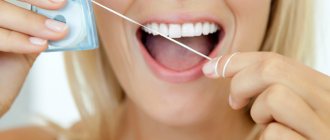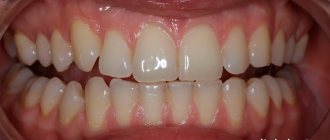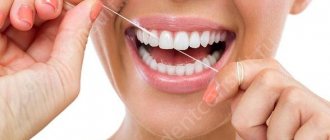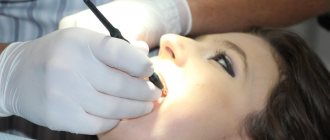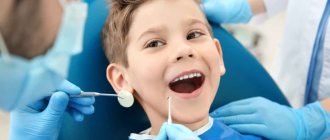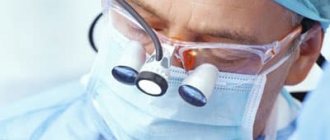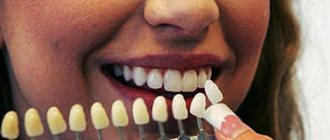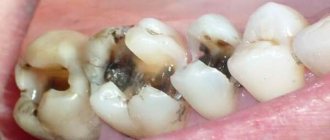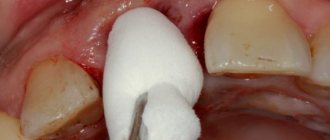In America and some European countries, preventive dentistry has been practiced for a long time. In our country, just 20 years ago, such a direction in medicine did not exist at all. However, the dental hygienist profession is now experiencing a real boom. The demand for such specialists exceeds the supply.
This trend will continue in the future. Everyone wants to have a beautiful smile and healthy teeth. In addition, the government is now paying special attention to preventive medicine, creating and implementing national projects in this area. All this bodes well for young professionals.
Story
It is generally accepted that the profession of a hygienist appeared in Russia quite recently - in the early 2000s. In America, where much attention is paid to disease prevention (after all, it is this approach that ultimately turns out to be economically beneficial for clients), the work of a dental hygienist began to become a separate profession already in the middle of the 19th century. It was then that doctors began to entrust their assistants with the care of keeping patients’ teeth clean and protecting them from caries. This made it possible to reduce the number of infectious diseases of the oral cavity by 60–65%.
Requirements
A dental hygienist does not treat oral diseases, but only prevents them. Despite this, it is subject to rather strict requirements that must be met.
List of requirements:
- Education. To become a dental hygienist, you need to graduate from a medical college or any specialized university, either full-time or part-time.
- Knowledge. Those wishing to become a hygienist must have knowledge in the field of anatomy, physiology, and pharmacology. In addition, they must thoroughly know the Latin language and the rules of oral hygiene.
- Skills. The specialist will need skills in working with modern medical equipment and communicating with patients of different psychological types.
- Observe precautions. People with various serious diseases can see a hygienologist. Therefore, in order not to contract any infection, he needs to follow all personal safety rules.
Description and characteristics of the profession
A dental hygienist is a medical specialist who can work both independently and assist dentists (orthodontists, periodontists, surgeons, etc.). The main goal of his work is the prevention of diseases of the oral cavity and teeth.
The dental hygienist must:
- have a good understanding of the anatomy and physiological processes of the body as a whole;
- carry out preventive measures aimed at maintaining oral health;
- instruct patients on hygiene procedures;
- perform diagnostic and treatment procedures provided for by the specialty;
- master first aid techniques in case of critical situations (an allergic reaction in a patient, a sharp drop in blood pressure, etc.);
- know the causes and symptoms of dental pathologies;
- work with the latest technical equipment and instruments;
- understand the mechanism of action and effect of prescribed drugs.
Professionally cleaned...
A survey of patients conducted by dentists showed that about 90% of the adult population brush their teeth 1-2 times a day. But the results of a medical examination are disappointing: brushing your teeth on your own is not enough to completely remove plaque from hard-to-reach areas. Professional cleaning includes determining the hygiene index using plaque-staining preparations. Like this? The doctor “paints” your teeth with a special product made from natural dyes, fixes the picture and invites the patient to brush his teeth in his usual manner. Then he records the result again. This way, the shortcomings of home brushing of teeth are revealed, and the patient receives practical advice from a professional regarding daily toileting. The hygienist immediately removes the remaining plaque with an electric brush with soft rubber attachments and an abrasive fluoride-containing polishing paste. If necessary, dental floss is used - also with recommendations for home use. If tartar is found, it will be mechanically removed immediately.
Everything unnecessary was removed, but the teeth remained. Healthy and beautiful.
Specialties, universities and Unified State Exam subjects
Medical colleges and universities prepare dental hygienists:
- colleges - specialty 02/31/06 “Preventive Dentistry”;
- universities - specialty 05/31/03 “Dentistry”.
Education at the college is conducted only on the basis of 11 classes. Preparation period – 1 year 10 months. Admission is based on a certificate competition.
To become a university student, you will need Unified State Examination results in the Russian language, mathematics, biology and chemistry or physics. Studying at the university will take 5 years, another two years will be spent on residency.
You can only get an education in colleges and universities on a full-time basis.
There are faculties of dentistry in all multidisciplinary medical universities and in specialized Russian universities that train medical workers. For example, in Moscow it is:
- Moscow State Medical and Dental University named after. A.I. Evdokimov.
- First Moscow State Medical University named after. THEM. Sechenov.
- Peoples' Friendship University of Russia.
- Russian National Research Medical University named after N.I. Pirogov and many others.
When deciding where it is better to get an education as a dental hygienist, you should take into account the indisputable fact: graduates of higher educational institutions are more willingly hired for well-paid vacancies in private medical centers and clinics.
Where to get training
In addition to higher education, there are a number of short-term training on the market, usually lasting from a week to a year.
The Medical University of Innovation and Development invites you to take distance courses for retraining or advanced training in the field of “Hygienist” to receive a diploma or state certificate. Training lasts from 16 to 2700 hours, depending on the program and your level of training.
The Interregional Academy of Additional Professional Education (MADPO) provides training in the specialization “Hygiene and Sanitation” and issues diplomas and certificates.
The Institute of Professional Education "IPO" invites you to take distance courses in the direction of "Food Hygiene" (there are options 256, 512 and 1024 academic hours) to receive a diploma or state-issued certificate. We have trained more than 8,000 graduates from almost 200 cities. You can undergo external training and receive interest-free installments.
Responsibilities
To understand what a dental hygienist does, it is not necessary to have specialized knowledge in medicine or understand specific terminology. His responsibilities include:
- drawing up an individual comprehensive oral care program;
- explanation of teeth brushing techniques;
- grinding of irregularities and defects of fillings;
- remineralization (enrichment with calcium) of enamel and its strengthening with fluoride-containing preparations;
- “sealing” small cracks in the enamel, which lead to increased tooth sensitivity;
- removal of dental plaque (tartar);
- treatment of periodontal disease.
During your appointment, your dental hygienist will adjust your nutritional program and select methods that will help you take full care of maintaining your oral health. If diseases and pathologies are detected, the treatment of which is not within his competence, the hygienist will recommend a visit to a therapist, orthodontist or surgeon.
Personal qualities
Before enrolling as a full-time or part-time student at a university, you need to find out where to study and what personal qualities will be needed in your future profession. Their presence or absence will help determine the appropriateness of choosing an applicant.
Required qualities:
- accuracy;
- pedantry;
- politeness;
- responsibility;
- determination;
- communication skills;
- persistence;
- altruism.
Who is the profession suitable for?
Like any medical specialty, the profession of a dental hygienist requires a special character. This is working with people who, due to illness, often become irritable and moody. To avoid conflicts, you must have an understanding of the basics of psychology and be able to establish contact with patients.
So, those who plan to devote themselves to preventive, that is, prophylactic dentistry, need to:
- be able to find a common language with patients;
- do not suffer from excessive disgust;
- be inquisitive and have a desire to continuously learn;
- have stress resistance;
- do not get lost in case of emergency situations.
Prospects for the profession
After graduating from a technical school or college, you can practice independently in budgetary organizations or together with a dental therapist in private clinics.
After graduating from a higher educational institution, you can work as a general dentist (therapist or hygienist) or obtain a narrower specialization as an orthodontist, prosthetist, surgeon, etc. You can work in public and private clinics. At the same time, no one forbids opening your own office. A good young doctor with a clear head and golden hands will quickly “grow” with a regular clientele. The only, but very significant, obstacle on this path is the material side of the issue. Opening even a small dental office requires a significant initial investment.
If you still have even the slightest doubt that the profession of a dental hygienist is right for you, then we strongly recommend taking a career guidance test from Profgid . It costs mere pennies, and at the same time allows you to avoid mistakes that can go in the wrong direction and cripple your entire life. Find out more >>
Oral hygiene is currently perceived as an irritating, even imposed procedure.
This happened not without the help of the dentists themselves: it is hygienic cleanings that often become the object of “promotions” to attract new patients. The quality of these “promotional” procedures is often low, and their meaning is completely lost.
Meanwhile, leading periodontal societies around the world are sounding the alarm that gum disease has been shown to have a significant impact on overall health, with people with periodontitis at higher risk of developing diabetes.
People with periodontitis also have a greater tendency to develop cardiovascular disease, including an increased risk of heart attack.
Pregnant women who have periodontal disease during pregnancy have more preterm births and are at higher risk of having low birth weight babies with preeclampsia.
https://www.efp.org/gum-disease-general-health/oral-health-and-systemic-health/
First of all, let's understand the terminology. The Russian people use the word “periodontosis” to mean everything that hurts in the mouth and is somehow connected with the gums.
This term should not be used.
Disease of the structure that holds the teeth in place (the ligaments of the teeth) is today called periodontitis rather than periodontal disease.
The suffix “-itis” means inflammation, as in gastritis – inflammation of the stomach.
Thus, the term periodontitis correctly describes the disease as inflammation caused by bacterial plaque on the teeth. The suffix "-osis" indicates a non-inflammatory process, such as "osteoporosis".
The outdated but still often misused term "periodontal disease" was previously used because the disease was known to result in loss of tooth attachment, without citing inflammation as the actual cause.
The use of the preferred term periodontitis reinforces the fact that this disease can be managed by reducing inflammation: removing plaque and preventing it from appearing.
Unique diseases are gingivitis, periodontitis and caries. These are diseases that can be COMPLETELY avoided by doing simple things correctly: good home hygiene skills are much more important than what the dentist does to you in the chair once every 6 months.
A dangerous misconception: after visiting the dentist and cleaning the office, you can forget about everything for six months.
An unpopular opinion for Russia, but a fact: home hygiene is much more important than procedures at the dentist.
In this situation, many can recognize themselves: they went to the doctor, they did a cleaning, it was painful and there was a lot of blood, then there was no smell from the mouth for a week, and then it went back to how it was: it bleeds and smells. Why did you go? Nonsense, these purges of yours don’t help. I won't go again. And all over again: stones, biofilm, odor, suppuration, bone moving away from the surface of the tooth.
It's simple: even after careful removal of plaque by a very good doctor, the biofilm will appear again very quickly. That is, without keeping your teeth clean at home, there will be no improvement.
Gingivitis and periodontitis are caused by bacteria that accumulate on the surface of teeth. This coating is also called plaque or biofilm.
When oral hygiene is poor, bacteria can multiply rapidly. Although most types of bacteria are harmless to healthy people, some types - even in small quantities - can cause serious infections.
If bacterial plaque is not removed from the teeth regularly, the gums react with inflammation within a few days.
The gums become red, swollen and bleed at the slightest irritation, such as when flossing. However, when teeth are brushed well and correctly at home, the signs of inflammation disappear within a few days.
In the correct version, in developed countries, two specialists work: a hygienist and a periodontist.
At the same time, it is the hygienist who is the most important link in all prevention, since his task is to TEACH home care, observe the patient, and TIMELY identify the stage of periodontitis when more serious intervention is required to preserve the attachment of the tooth.
A periodontist is first and foremost a surgeon. A specialist who supervises the hygienist can surgically create access to the root, remove plaque from there, and use microsurgical techniques to restore lost gum tissue (the so-called recession - when the gum “slides” from the tooth, the roots are exposed, and unbearable pain occurs).
Expert periodontists are skilled in operations called guided bone regeneration: it is possible to partially restore lost bone tissue in the area of tooth attachment. Today there are effective microsurgical techniques for restoring what was lost. These are rare skills that few people possess: but today you can find periodontal surgeons in the country who can do complex things.
It is the fight against plaque, and not shamanic techniques in the form of injections, lotions and other old-fashioned methods, that is the KEY to curing gum disease.
Humble yourself. No device, no injection, no rinse will help if you have not been trained to properly maintain hygiene at home. It is important.
Hygiene training cannot be sold at a high price; you cannot make crazy money from it. It is not profitable to learn to teach hygiene.
But in the world there are huge research bases, grants, and resources from leading periodontal communities that are designed to disseminate knowledge about periodontitis.
Not a magic paste, not a device, not a medicine. Only WE are in control of the situation: our hands are able to prevent gingivitis, periodontitis and caries.
Historically, prevention has been a somewhat nebulous area in our country. But attention: prevention itself as a concept is not something that an expert specialist does. This is a DAILY routine work of the person himself, which must become a habit in order to prevent complications in the future.
The correct stages of patient management from the point of view of advanced prevention look like this:
-examination, diagnosis (gingivitis - superficial inflammation: one approach, periodontitis - a condition with bone loss: another)
-professional mechanical plaque removal and hygiene instructions (the doctor stains the teeth with a special solution to see the biofilm and shows you where you are brushing ineffectively)
-control of your home hygiene (painted again - explained, shown, photographed, made sure that everything was understood correctly)
-control observation, assessment of dynamics: only at this moment, in the presence of residual periodontal pockets, a periodontist surgeon is involved)
-professional long-term care (dispensary observation by a hygienist on an individual schedule of visits, in accordance with the diagnosis).
How does a proper appointment with a hygienist take place:
1. We start with an initial examination, during which the condition of the hard tissues of the teeth is assessed and recorded (the usual dental formula - fillings, caries). The implants, the condition of the gum tissue around the teeth, crowns and implants are described, and an examination of the oral mucosa is mandatory. The hygienist is the first link in oncological alertness! It is he who can see the beginning processes on the mucous membrane, which are atypical, and refer to a related specialist.
2. Indication (staining) of dental plaque is carried out, with the application of a special solution, which allows you to accurately and reliably identify areas of plaque accumulation (biofilm). All this is carefully photographed and shown to the patient: where there is paint on the tooth there is plaque and biofilm. This is clearly visible and well understood even by children: stained plaque has a different color, depending on how long it has been on the teeth.
3. Next we talk with the patient.
We provide recommendations for individual oral hygiene. We show the correct movements first on a model, and then the patient himself does it in front of the doctor, and the doctor corrects the correctness of cleansing.
Selection of toothpaste, toothbrush: manual; electrical: rotating, sound.
Particular attention is paid to the mono-beam brush: it cleans hard-to-reach areas and cleanses the gum line without damaging soft tissue.
Interdental brushes, not dental floss, are the gold standard for cleaning between teeth. The brush is selected for each interdental space using a special calibration probe, and then the doctor indicates in a special card the color of the brush for each interdental space. This card is given to the patient.
4. The professional cleaning procedure itself: first the air-powder treatment procedure, and only then ultrasonic cleaning of hard dental deposits. Modern protocols use erythritol-based powders containing chlorhexidine: this allows the removal of biofilm under the gum.
7. A control examination of the oral cavity is carried out to ensure the absence of dental plaque: staining helps with this. No paint on the tooth - no biofilm! A professional hygienist often uses binocular magnifying loupes to ensure that nothing is missed.
8. We plan a return visit to the patient regarding his dental status: a personal schedule of visits and monitoring is selected.
As a result of the appointment, the patient knows exactly where he does not clean enough (everything was painted, photographed, shown), understands exactly which brush is suitable for him, and what movements it needs to make in order to clean those areas that he saw in the photographs - this is very clear ! Paste, brushes and floss - at the hygienist’s appointment, the patient tried to clean hard-to-reach places using all the methods that the doctor SHOWED and controlled.
In Russia, a hygienist is still a “toothpick.” We, as professionals, do everything in our practice to change this: we build our reception in accordance with global protocols.
In our specialty, periodontology is the most dense, complex specialty. Myths, legends, beliefs, rinses, taking some dietary supplements. This is all blooming and spreading both among doctors and patients.
The mission of smart dentists is to ensure that patients are motivated and willing to cooperate not only in the area of wanting veneers, but also in maintaining healthy gums. Followed the recommendations. And then the work that we do professionally in the oral cavity will last for decades. Look for your dentists.
The author of the article is Ekaterina Kozoliy, dentist, endodontist, leading specialist at the VideDent clinic.
